#there is no margin for error with misinformation
Explore tagged Tumblr posts
Text
We are gonna be discussing gender identity in my developmental psychology class at 9am today (in 6 hours)
I have not slept and probably won't be able to for a while
I fear I will be impatient and frustrated
Ngl I'm ready to fight
#i know my lecturers mean well but#when it comes to autism or gender identity#its never conveyed properly unless the person who wrote it is neurodivergent or trans#shit gets glossed over#there is no margin for error with misinformation#that shit is so harmful to my communities#psychology#queer#lgbt#student#psychology student#trans#transgender#also fuck baron-cohen i hate him
11 notes
·
View notes
Note
What notable books (or author) on folklore and/or mythology would you consider to have reliable info, and which ones definitely don't? It's a broad ask, but what are the first names that come to mind?
Very good ask! I'll try to see if I can put my thoughts in words, but if you need any further examples or evaluations let me know.
Here's a general rule: primary sources are Good. Books that directly reference primary sources are Good. The more distance between a book and the primary source, the less reliable it gets. Always ask yourself, where is this book getting its information from? How does it present this information? If you're not dealing with primary sources, always check to see how information is presented and where possible errors could creep in.
For example...


Books like these are the gold standard for reliability. If I was handing out ratings, they would score a perfect 5 out of 5. Everything is extensively cited (the second book is practically all citations). You can't go wrong with these.
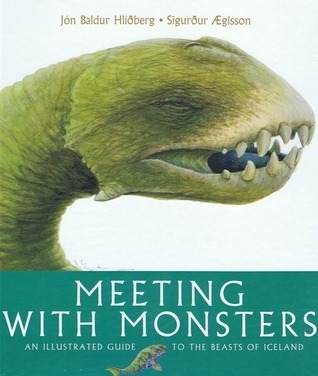
In general the more specialized a book is, the more reliable it is. So the excellent Meeting With Monsters gets a very respectable 4.5 out of 5. Very detailed info just about Icelandic monsters. Why not 5? The authors engage in some speculative creature building where they treat the monsters as real animals and invent features for them (the hrosshvalur has dorsal spines teeming with bacteria that infect the wounds it causes, for instance). But these are restricted to marginal notes and do not interfere with the actual information.
More general books generally get less reliable. Again, ask, where are those sources? What are they?

This one is often held up as the encyclopedia of mythical creatures currently in print. It's a decent starting point to start looking for things. It has sources and each entry is linked to its sources. The entries are written in a dry, concise encyclopedic style. But it relies far too much on second and third (and fourth, etc) hand sources. Scratch a little past the surface and you start finding weird mistakes, errors, inaccuracies. Snowballing misinformation. I would consider this to be of average reliability at best. A 2.5 out of 5 or so. Best used as a suggestion to dig into deeper, better things.

This one is a broad introduction to dragons, but instead of an encyclopedia, each "entry" (chapter?) is presented as a retelling of that story. And with that comes very low reliability and heavy use of secondary sources. The retellings make stuff up that isn't anywhere in the originals and miss a lot of the point of the stories - and spread misinformation that continues to propagate online. Also there's plenty of cryptozoology in there so eeehhhh.

This one is obviously aimed at a younger audience, but I'm mentioning it because of one amusing detail. It seems to be a good introduction for children to dragon mythology. Except it presents with a straight face the marsupial dragon as a dragon from Australia. The marsupial dragon, you know, which was written into Dragonology as a joke? And Dragonology wouldn't even have made my primary-source-reliability anyway! Some due-diligence was not duly diligenced, if I may say so.
Then there are books that are just... confusing.
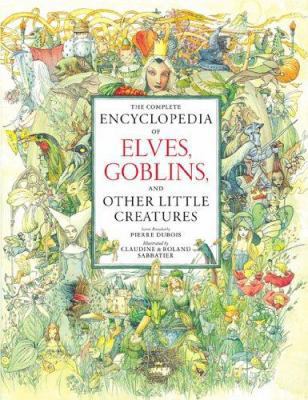
Like anything by Pierre Dubois. On the surface they seem well-researched. But the references and cross-references are more opaque than... uh... a very opaque thing. He clearly has a lot of them, but it's anyone's guess where the information he got came from (no cross-referencing, you see). Combine that with him just making stuff up to pad page numbers and it's never clear what is "true" and what he wrote (and some of it is distasteful, not going to lie). Sometimes he even misses the interesting part of legends just to write his own stories. The most charitable take is that this is literary fantasy, and maybe what he's said can be traced to actual reliable folkloric sources, but after having used him as a source of information I cannot recommend him. You could also argue that Dubois never does claim that this is a scholarly reference, but it sure is presented as one.

I have so far restricted myself to books that claim (or seem to claim) to be references on myth, legend, and folklore. Books that engage in speculative "creature building" (e.g. Dragonology, The Flight of Dragons, etc) would not be reliable as references, but they're still great books. You just wouldn't use them as sources of information.
... or would you? Sometimes non-reference books get treated as such, and then the information they made up gets reified by being parroted uncritically by later books. Like Woodruff's book above. A fake "long-lost expedition journal" by Pliny the Elder, it's an excuse for (gorgeous) art and Latin practice. Except that some of the made-up stuff in there found its way out of the book and - uncited - ended up in supposedly serious works. Like the Pyrallis being a dragon, or the two-headed Hyperborean frogs. Confusing. It even got a minor news mention because people were taking it seriously!
Anyway, how about you? Any books you find reliable or unreliable?
90 notes
·
View notes
Text
"But Palestinians elected Hamas!"
False. Let's take an analytical look at the reality of the situation and the statistics behind the most recent Palestinian election.
First of all, the most recent parliamentary (and legislative) election in Palestine took place in January of 2006, just over 18 years ago.
At that time, the estimated population of Palestine was about 3,761,904 (reported as of July 2005). Interestingly enough, at this time, just over half of the population of Palestine (52.3%) was under the age of 18. Those numbers alone suggest that Palestinians as a whole could not have voted for Hamas, since the majority of the population was underage.
But of course, there's even more to this story. Of the population that was eligible to vote, only 1,341,671 were registered to vote and only 1,042,424 votes were cast. Of the cast votes, only 990,873 were labeled as "valid" votes. That comes out to approximately 26.3% of the population of Palestine in 2006 having cast valid votes.
However, the plot thickens even further. In 2006, Hamas was under a party called "Change and Reform", which won the election by a slim margin with a majority of 440,409 votes compared to the runner up with 410,554 votes. Doing the math, this means that in the most recent election in 2006, Hamas, under the Change and Reform party, won the election with a vote from approximately 11.7% of the total population of Palestine.
And if those numbers aren't already enough, let's compare that to the current population, seeing as the 2006 election was so long ago. Making the bold assumption that every single person who voted for Hamas in 2006 is still alive, and compared to the current Palestinian population of about 5.4 million people, that comes out to be approximately 8% of the current population having voted for Hamas.
Yes, you heard me right,
Only 8% of the current population of Palestine voted for Hamas
Now I know I hardly have any followers and the chances of this post getting any attention are slim to none, but these numbers are so important. When we talk about Hamas, October 7th, and the ongoing, centuries old Israeli-Palestinian conflict, we have to consider the analytical data behind all this. Those of us supporting Palestine have never said we're in support of Hamas, in fact many of us understand the detrimental impacts Hamas has had on the Palestinian political system.
All we're asking is for you to have even an ounce of compassion and understanding for the fact that tens of thousands of innocent civilians are being killed at the hands of the Israeli military. This is a genocide. Israel is an apartheid state. There's no debating that.
Sources:
https://theloop.ecpr.eu/palestinian-elections-hang-in-the-balance/
https://www.electionguide.org/elections/id/1433/
https://english.wafa.ps/Pages/Details/104279#:~:text=RAMALLAH%2C%20November%2019%2C%202006%2C,of%2018%20years%20in%202006.
https://www.worldometers.info/world-population/state-of-palestine-population/#google_vignette
(please lmk if I've made any errors with links or misinformed sources or if I've made a miscalculation or stated an untrue fact)
#all eyes on palestine#free palestine#i stand with palestine#palestinian genocide#gaza genocide#free gaza#gaza#palestine#politics#voting#israel#israel kills children
48 notes
·
View notes
Text
I have a lot of thoughts about post-election misconceptions I've seen online, and I was writing something long-winded about it this morning, but I think it's much more to the point to say:
I wish statistics was better-addressed in U.S. public schools.
It's not that every (or most) high schoolers need to know the density function for the normal distribution, but, like. They need to know about margin of error. The basics of confidence intervals. The importance of sample size. Most of all, looking at reported statistics in the news and using critical thinking skills while actually interpreting them. Judging whether a given headline is being sensationalist about a result that's not nearly as certain as the headline claims. And less relevant to politics, but relevant to life — understanding false positives and false negatives. You can put this in a math class, you can put this in a science class, you can put this in a government class, maybe you should ideally put a little bit in each, but it has to be there.
And I say this with patience and compassion towards the people who didn't receive this education, because I certainly wouldn't have gotten the majority of it, if I hadn't gone into a related field in college. I also say this with sympathy towards the math, science, and government teachers who face enough challenges even without having to work all this statistics into the lesson plans. But I think this country's misinformation problems can never be fully solved while our statistics-comprehension problem is still this dire.
27 notes
·
View notes
Text
Blog Post #3
How does technological redlining impact marginalized groups regarding access to accurate and reliable information online? Technological redlining is defined as “Algorithms in the age of neoliberalism and the ways those digital decisions reinforce oppressive social relationships and enact new modes of racial profiling.” Redlining typically refers to certain groups of people being turned down and discriminated against when it comes to housing, but technological redlining refers to the same groups of people being discriminated against online. This excludes them from gaining access to accurate and objective information leading to misinformation and unreliable information due to the biased algorithms. “While Googling things on the Internet that might be interesting to t my stepdaughter and nieces, I was overtaken by the results. My search on the keywords “black girls” yielded HotBlackPussy.com as the first hit.” Google is one of if not the most used search engines and while searching about a certain marginalized group of people the results came to show that the information being put out as most relevant, useful, and first is perpetuating these hurtful stereotypes on certain groups of people. So technological redlining is not only disconnecting people from accurate information but it is also pushing out these stereotypical views on groups of people.
How does the New Jim Code continue with racial inequalities through biased algorithms? The New Jim Code is defined as “The employment of new technologies that reflect and reproduce existing inequities but that are promoted and perceived as more objective or progressive than the discriminatory systems of a previous era.” There are inequalities that are still here today but they are being presented in new ways meaning that it may seem like things are progressing and getting better but they are showing up differently in the present day and that is through technology. Jim Code is a take on modern Jim Crow Laws where segregation was institutionalized, Jim Code is present through bias integrated in softwares and algorithms. For example, darker skin have a higher error rate when dealing with facial recognition softwares. “For instance, in a recent audit of California’s gang database, not only do Blacks and Latinxs constitute 87 percent of those listed, but many of the names turned out to be babies under the age of 1, some of whom were supposedly “self-described gang members”.” Here there’s an error in this system since you can’t obviously join a gang at a couple months of age but it is these fixed algorithms that target certain groups and continue to fit them into these stereotypes.
How is the new digital divide continuing to impact communities? Digital Divide once was whether you had access to a computer or not, but now the divide is much more referring to the barrier marginalized groups, mainly black communities, face limiting digital resources and this hinders their full access to the digital world. It is much more than physical access to the internet but now it is about the ability to use it correctly. Digital literacy and using information to your advantage, correctly, and to educate yourself is now a barrier that is dividing people. High speed internet and the devices that allow for that kind of technology isn’t accessible for everyone and in this case Everett talks about how a lot of black people lack those resources which puts them at a disadvantage. People aren’t able to access websites for job searching, education, and other tools necessary in this day and age.
How does intersectionality challenge fixed frames created by society? Fixed frames are the categories and ways that we as a society view oppression and identities. Intersectionality challenges those fixed frames since social problems are viewed incorrectly sometimes as they can be oversimplified and narrowed so it is incomplete. For example, race and gender can often go hand in hand, the example give by Dr. Crenshaw was that many recognize the names black men who were impacted by police brutality but black women who experienced the same are overlooked. These issues are often treated as two separate things even though they intersect. Fixed frameworks show how rigid society's thinking is. Social justice topics are more complex and intersectionality allows for more inclusive and accurate views.
Everett, Anna. The Revolution Will Be Digitized: Afrocentricity and the Digital Public Sphere. Universiteit Utrecht, Faculteit Der Letteren, 2001.
Crenshaw, Kimberle. “Kimberlé Crenshaw: What Is Intersectionality?” YouTube, 22 June 2018, youtu.be/ViDtnfQ9FHc?si=WVePLu-iTneM2sc_.
Noble. Algorithms of Oppression. New York University Press, 2018.
Benjamin, Ruha. Race after Technology: Abolitionist Tools for the New Jim Code. Polity, 2020.
4 notes
·
View notes
Text
Oh, hey! It's been a while since I've dealt with anti-endos invading the endogenic tags!
Guess it's time to deal with this.
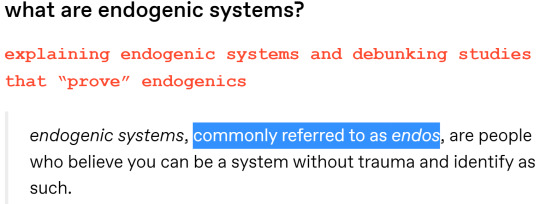
Off to a bad start right away.
I almost always only see "endos" as a pejorative used by anti-endos. It's rare that endogenic system refer to themselves as "endos." While I wouldn't say it's quite a slur, it's not

Okay, so right from the start, the sources they cite for the claim that endogenic systems are impossible under the Theory of Structural Dissociation are from DID-research... a blog by a doctoral student.
And these pages don't even say anywhere what @jananpa claims it does. Let's actually hear what the authors of the Theory of Structural Dissociation have said about the existence of other forms of plurality.
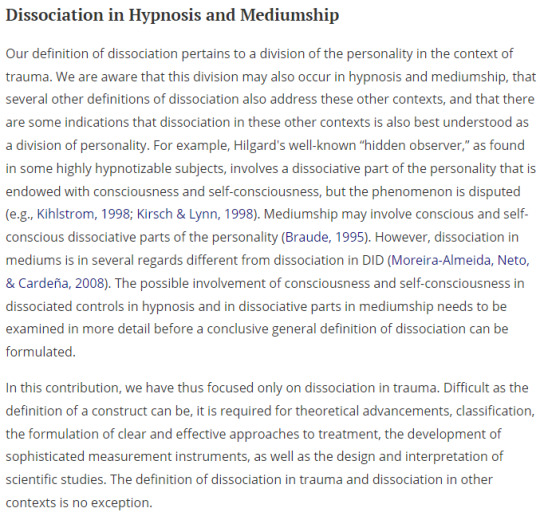
There you have it from two of the authors of The Haunted Self, the book that started the Theory of Structural Dissociation, that it's possible for other "self-conscious dissociative parts" to exist outside of trauma and dissociative disorders. (This is also consistent with how the ICD-11 states that you can have multiple "distinct personality states" without DID.)
At no point has the Theory of Structural Dissociation ever claimed that endogenic systems are impossible.
Stop lying.
Stop misrepresenting the theory of Structural Dissociation when even the authors don't support you.

Just noting that the source here is a Carrd which in turn doesn't provide sources for any of its claims.
This is probably where @jananpa got most of their misinformation since everything they say is taken straight from its talking points.
On this note, Jananpa mentioned wanting to major in psychology. If they go down this route, I sincerely hope that they learn how to tell if a source is trustworthy or not on their chosen career path, and to not just blindly believe every bigoted Carrd they come across.

This isn't actually an unfair assessment.
Well, aside from the repeated claim that endogenic plurality violates the Theory of Structural Dissociation, which we literally just proved was a lie. It is true that there isn't a "study" in the chapter.
All that this really shows is the opinions of Eric Yarbrough, who is a Distinguished Fellow of the American Psychiatric Association, in a book that was peer reviewed and published by the APA's publishing arm.
It's not a study. But it DOES show recognition and support in the psychiatric field by notable professionals.
Which is more than you can say of the anti-endo opinion that endogenic plurality isn't possible, because absolutely no psychiatrists will ever back you up on that claim, and it's disputed by both the creators of the Theory of Structural Dissociation and the World Health Organization.
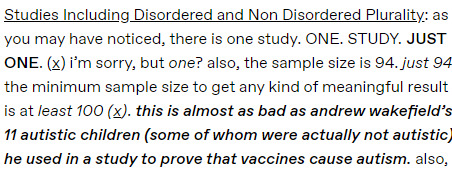
Oh no! The sample size is six less than the rule of thumb for a minimum! The horror! 😲
But wait... did they... actually look at that source of theirs???
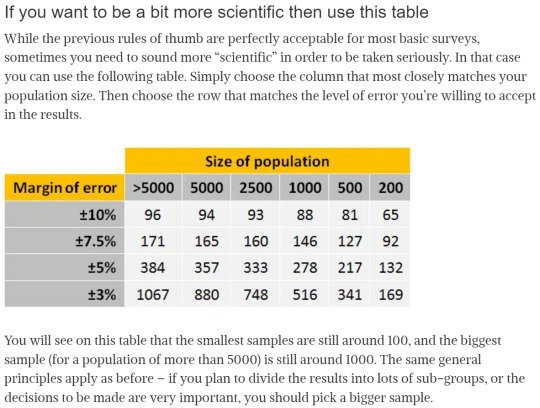
While the minimums have the largest margin of error, a 10% margin of error isn't really an issue in surveys that are just gathering general opinions like this. And this shows the 10% at 96 for population of larger than 5000. Basically only two off of what's listed here.
It's utterly ridiculous to say a sample size of almost 100 is even close to the equivalent of a sample size of 11.

I'm not going to comment on the Jung article itself since I haven't looked into this much. If anyone wants to add anything, they're welcome to. But obviously older works about plurality aren't using the word plural because the term itself is recent. They just describe instance of people experiencing multiple self-conscious agents sharing a body. Acting like someone not using the word plural is this great "gotcha" is silly.
What I will say on this is that yes, inner worlds can be consciously created in DID. There are guides out there on how to do it.
Actually, I don't think the leading theory is even that trauma causes you to "gain" an inner world (at least not directly), so much as retreating into fantasy worlds is a common trauma response and that action causes inner worlds to develop. Outside forces (trauma) result in an action (escapism) which leads to inner world development.
But the action does not require trauma.
Not everyone exposed to trauma develops complex inner worlds because not everyone responds to trauma with the same coping mechanisms.
You should also pick an armchair diagnosis and stick with it. Is his inner world SZPD or MADD? These are very different disorders.
Or better yet, don't do either. Not all daydreaming is maladaptive, and you shouldn't assume somebody has a disorder just because they have complex inner worlds. Immersive daydreaming is a common practice, and it's not maladaptive unless it interferes with daily life.

No.
Stop.
Literally all of this is wrong!
For starters, there's no evidence anywhere of the Tibetan Buddhist practice being closed, and the Dalai Lama has said that people of other religions can use Tibetan Buddhist meditations.
“Many Christians tell me they believe in Buddhist meditation, which can be learned by Christians. We teach right attitude. We teach meditation, which can be quite deep. These would be things that the West can take, and I think it is clear that Buddhists should practice certain Western methods, too.”
Moreover, the Tibetan Buddhist practice is not called Tulpamancy. "Tulpamancy" is a term associated solely with the Western practice.
And Tulpamancy is largely NOT a religious or spiritual practice. From Varieties of Tulpa Experiences:

76.5% of tulpamancers view their practice as psychological.
Both the above study and the one referenced in Jan Anpa's post are about the primarily psychological Western practice. As will be ALL research into tulpamancy. The Buddhist religious practices it shares an etymology with is completely irrelevant to this topic of studies into the disorder.
Tulpamancy is primarily seen as psychological plurality by most tulpamancers, and that's what these studies are about.
You're welcome to look into the above study further as it has a lot more information on tulpamancy. It's was written by Samuel Veissière, a psychiatry professor at McGill University in a book reviewed and published by the Oxford University Press.
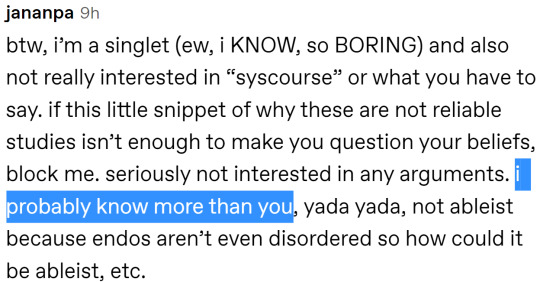
Jananapa, if there's one thing that's clear from all of this, it's that despite being confident in your ignorance, you know absolutely nothing about systems, structural dissociation, plurality, tulpamancy or literally anything else discussed in your post.
Given your self-assured ignorance of systems, I wouldn't recommend people put any trust in your understanding of Autism or any of the other conditions you discuss on your blog.
If anyone wants to further educate themselves on endogenic systems, please see my Endogenic Syscourse Primer.
As always with these hate posts that end up being posted in pro-endo tags, it's only fair that I share my responses in anti-endo tags along with many other tags the initial post was made in.
If any anti-endos are bothered by this, please ask @jananpa to not post in our tags anymore. As long as anti-endos stay in their lane, I'll stay in mine. When anti-endos invade our spaces, my responses to those posts will continue to go straight to theirs. If we can't have safe spaces to exist, then you aren't allowed safe spaces to spread hate against us. (I will avoid DID/OSDD/traumagenic tags out of respect for non-anti-endos in those spaces. But you might want to ask that Jananpa stay out of those tags as well since I know you guys also tend to not care for singlets posting in those tags.)
#syscourse#pro endogenic#pro endo#anti endogenic#anti endo#ableism#autism#endogenic#endo system#endogenic systems#autism community#autistic#system#systems#multiplicity#neurodivergencies#neurodivergent#neurodiversity#neurodivergence#actually a system
77 notes
·
View notes
Text
More Americans embrace COVID vax untruths: Poll - Published Aug 29, 2024
This is why vax and relax was a mistake: Without other mitigation, the vaccine has failed to stop the spread of covid, leading people to doubt vaccination rather than the public health officials and politicians who promised more than they could fulfil. This covid vaccine hesitancy/refusal spreads to other immunizations, meaning children aren't getting their MMR and other necessary shots, fueling outbreaks and deaths of diseases once considered extinct in my lifetime.
Growing numbers of Americans are buying into misinformation about COVID-19 vaccines, according to a new national survey, with more than one in five believing it's safer to get the virus than to get a shot.
Why it matters: Belief in misconceptions is stoking vaccine hesitancy with the nation facing a summer surge of infections, more COVID-related hospitalizations, and updated shots now reaching pharmacy shelves.
The big picture: The findings from the University of Pennsylvania's Annenberg Public Policy Center are further evidence of how intense backlash to the government's at times muddled COVID response eroded trust in public health, jeopardizing preparedness efforts to address future crises.
The proliferation of vaccine misinformation on social media has also outpaced efforts to counter it, Columbia University researchers found earlier this year. What they found: 28% of respondents to Annenberg's survey incorrectly believe that COVID-19 vaccines have been responsible for thousands of deaths, up from 22% in June 2021. The percentage who know this is false declined to 55% from 66%.
22% believe the false idea that it's safer to get a COVID infection than to get the vaccine, up from 10% in April 2021, months after the shots were rolled out. The percent of those incorrectly believing that the COVID-19 vaccine changes people's DNA nearly doubled to 15% from 8% in April 2021. Yes, but: Two-thirds of Americans still say the benefits of taking COVID-19 vaccines outweigh the risks. But that's a lower percentage than those who said the same for the mpox vaccine (70%), RSV shots for adults 60 and older (74% when asked in October 2023), and the childhood measles, mumps, rubella vaccine (89% in August 2023).
Just under half of those surveyed said they'd likely take a combined mRNA vaccine to protect against flu, RSV, and COVID-19 if one were offered and the Centers for Disease Control recommended it. 27% say they would be "not at all likely" to take such a single-shot vaccine. Between the lines: Previous polling has shown sizable numbers of Americans who believe COVID vaccine misinformation know they're at odds with scientists and medical experts, suggesting that educating people on the science behind vaccines won't change many minds.
"A belief that persists across waves of a survey is probably less subject to change than a recently acquired one," said Annenberg Center director Kathleen Hall Jamieson. The current wave also isn't heightening concern about the virus itself, the survey found. Only one in five said they're somewhat or very worried that they or someone in their family will contract COVID, down from 25% in February and 35% in October 2023. The survey of 1,496 adults was conducted July 11-18 and has a margin of sampling error ± 3.6% at the 95% confidence level.
#covid#mask up#pandemic#covid 19#wear a mask#coronavirus#sars cov 2#public health#still coviding#wear a respirator
11 notes
·
View notes
Note
funny you say that I can’t remember if it was one or two but technically. Yes the doctor was the first man to walk on the moon

no. they’ve cornered me by confronting me with untrue facts about the moon landing, a topic i am in fact reasonably knowledgeable about. i know there were three astronauts during the first moon landing, though only buzz aldrin and neil armstrong ever walked on it. BUT. if i say that now, i reveal myself to be a fucking nerd. hm. maybe i can play this off cooly. if i keep details to a minimum and focus on reacting to the joke at the end about our common media interest, no one will notice that i’m so bothered by this misinformation that i need to correct it- Wait, no. Everything I do on this blog is for an audience, and what’s funniest has to come first or they’ll all start questioning why they follow me in the first place. i can’t correct the misinformation, no matter how much it pains me to let it slide, because i have to stay committed to my bit of ignorance. damnit. i’m taking too long to respond. wait, that’s it, i can always pretend i got busy and was going to answer the ask later, but never actually answer it! it’s brilliant! they’ll never know if it’s the result of deliberate ignorance or my unmedicated adhd! it’s the perfect plan! unless… they send a follow-up ask. one message can slip through the cracks, but two? they’d know it was on purpose. i can’t leave that margin for error. shit, i need to answer quickly. stay calm, the principle of ‘yes and-’ has gotten you this far on tumblr.com. it won’t fail you now.
the moon landing was faked to give doctor who free publicity
9 notes
·
View notes
Text
Here’s why so many Republicans won’t buy EVs. (Washington Post)
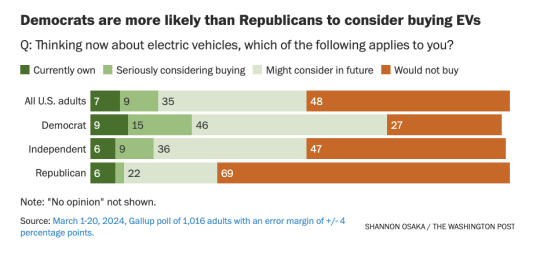
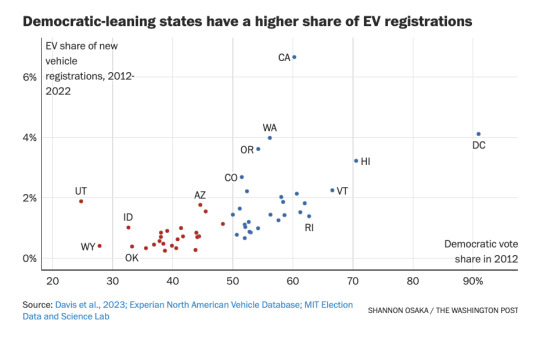
Electric cars have taken off across the United States. Even amid news of slowing sales, the country sold almost 1.2 million fully electric vehicles in 2023, more than quadruple the number in 2019. Grocery stores and rest stops are installing charging stations across the country; electric cars have moved beyond niche status and are being produced by Ford, GM, Hyundai and many others.
But there is one thing holding the nation back from the dream of an all-electric future: politicalpolarization. Sales data have consistentlyshown that while Democrats have been buying the new cars in droves,Republicans haven’t jumped onto the EV-buying train.
“The Republican is like, ‘They’re trying to ban gas cars — I’m not going to buy a Biden-mobile,’” said Mike Murphy, a former Republican strategist who runs the nonprofit EV Politics Project, which attempts to counter misinformation on electric cars and encourage conservatives to adopt the vehicles.
Personal cars account for 20 percent of U.S. planet-warming emissions, and more Americans still prefer gas-powered ones. A Washington Post-University of Maryland poll last year found that 46 percent of respondents favored a gas car, compared to 19 percent who wanted a fully electric vehicle. If that doesn’t change, it will be almost impossible for the United States to meet its climate goals.
According to a Gallup poll conducted in March of this year, 61 percent of Democrats reported that they were “seriously considering” or “might consider” buying an EV in the future — compared to only 24 percent of Republicans. At the same time, 69 percent of Republicans said that they “would not buy” an EV in future, compared to 27 percent of Democrats. The difference in Democratic and Republican respondents who owned an EV was within the margin of error.
Actual sales show a partisan trend. According to an analysis from researchers at the University of California, Berkeley, MIT and HEC Montréal, between 2012 and 2022 about half of all EVs sold went to the top 10 percent most Democratic counties in the United States. Around a third of all EVs sold went to the top 5 percent most Democratic counties. That pattern persisted when researchers analyzed the most Democratic states, according to the working paper, which has not yet been peer-reviewed.
The finding held when researchers accounted for income, gas prices and population density. That means that even when looking at dense, urban areas — which are more likely to have more public EV charging — Democratic counties outweighed Republican ones in EV adoption.
6 notes
·
View notes
Text
Junk Science Gets Cats Killed
Lately, scientific research is being exploited by fringe interests to promote the absurd notion that outdoor cats are the leading cause of bird species declines in the United States.
The most commonly cited was published in the online journal Nature Communications and funded by the Smithsonian Institution and the U.S. Fish and Wildlife Services (“The impact of free-ranging domestic cats on wildlife of the United States,” January 29, 2013 by Scott R. Loss, Tom Will, and Peter P. Marra).
News outlets have sensationalized coverage of this and similar “studies” by labeling cats as “serial killers” and using other exaggerated metaphors to manufacture a fake debate about outdoor cats and species decline that plays right into the fringe interests and bolsters their flawed arguments.
The common-sense and seldom-reported facts, however, are that habitat destruction, pollution, and climate change are far and away the greatest threats to birds and wildlife.
Bogus reports, propagated by the mass media, sidestep serious discussion on the real threats to birds and wildlife, and end up scapegoating cats.
The Smithsonian-funded study published in Nature Communications is not rigorous science.
It is a literature review that surveys a variety of unrelated, older studies and concocts a highly speculative conclusion that suits the researchers’ seemingly desperate anti-cat agenda. This speculative research is highly dangerousit is being used by opponents of outdoor cats and Trap-Neuter-Return (including the authors) to further an agenda to kill more cats and roll back decades of progress on TNR. And it is being spread unchecked by the media. Only a handful of reporters, including CNN’s Erin Burnett, have questioned the Nature Communications research. Burnett noted the ridiculously large margin of error the authors employed, deemed it “unacceptable,” and told her viewers, “When it comes to the danger of cats, it seems like they’re just telling tales.”
To assess the integrity of the Smithsonian study, Alley Cat Allies commissioned a respected, independent statistician, Gregory J. Matthews, PhD, of the University of Massachusetts at Amherst.
Dr. Matthews conducted a thorough review of the statistics and methodology used in the study and found major flaws that should have made the authors’ research unacceptable for publication. Some key insights from Dr. Matthews’ assessment:
The authors looked at a number of previously published studies to make their case. The studies have a huge range in size, scope, and geography. Some were not peer reviewed. Some were decades oldone of the studies the authors used was published in 1930. They counted one study twicea major error that was not picked up by peer reviewers.
There was no use of a meta-analysis to normalize across all these very dissimilar studies. Use of a meta-analysis is common, and the authors failed to address why they did not use one. They also failed to acknowledge that each individual estimate itself has error.
The authors used extrapolation where it was not warrantedoften. They failed to account for variations in season, geography, or predation opportunity.
“If a student turned something like this in for a freshman statistics class, he would have failed the assignment,” Dr. Matthews relayed to Alley Cat Allies in an interview.
No one should be swayed by this junk science.
But such misinformation does confuse the issue about outdoor cats, and the authors know it. Indeed, they are doing nothing more than promoting cleverly veiled propaganda to promote their true agenda, which is mass extermination of the millions of outdoor cats in the United States.
Here’s the real story: Trap-Neuter-Return remains the only effective approach for feral cats.
Animal protection experts, individual caregivers, mayors, city councils, and county commissioners across the country are turning to TNR as the best response to feral cats. By humanely trapping, neutering, vaccinating, and then returning outdoor cats to their natural environment, communities can end the breeding cycle, protect cats, and save taxpayer dollars.
Studies clearly show that TNR policies effectively reduce the size of outdoor cat colonies both immediately (with the removal and adoption of kittens and socialized cats) and over time (as the population stabilizes and the breeding cycle ends).
Supporters of catch and kill programs have spread misinformation in an effort to slow down the adoption of TNR policies. They have spread myths about outdoor cats’ health and their impact on the environment. They are desperately clinging to these myths in an attempt to cover up the truththat catch and kill is extremely cruel, ineffective, and wasteful. Decades of failed catch and kill policies prove that it does not even permanently reduce outdoor cat colonies, and it wastes taxpayer dollars that should be used to protect animals.
Trap-Neuter-Return is safe for our communities. It’s humane. And it’s effective.
Because TNR is proven to stabilize and reduce cat populations over time, it is now the gold standard for feral cat management in the United States. More than 300 communities have passed laws or enacted policies supporting the practice of TNR. Major cities including San Francisco, New York, Philadelphia, Chicago, Washington, D.C., and dozens more have embraced TNR. Animal control and public health officials have endorsed it, calling it common-sense and effective. Trap-Neuter-Return reduces calls into municipal agencies, keeps cats out of shelters, encourages spay/neuter practices, and saves tax dollars.
Junk science gets cats killed.
It’s time for the national media to start reporting on the thinly veiled agenda of anti-cat researchers: their proposed “solution” really endorses the continued mass killing of cats.
Content source: https://www.alleycat.org/resources/junk-science-gets-cats-killed/
#Cat Rescue Near Me#Building Outdoor Cat Shelters#Outdoor Cat Shelter#Cat Shelter#Stray Cats#Feral Cat Shelter#Community Cats#Cat population control
2 notes
·
View notes
Text
The prevalence of neurodivergency in gifted children is around 17% (with an INSANE error margin), which is more or less the prevalence of neurodivergency in the general population.
This is a topic where misinformation abounds so please refrain from claiming as facts things like this.
(not denying the vast majority of gifted ppl on this website are almost certainly also neurodivergent, but the key word is "this website". of course tumblr dot com has a sampling bias.)
people misunderstand what ‘gifted kid’ actually means but it’s ok it’s fine it’s cool it’s good
140K notes
·
View notes
Text
The crucial thing is to be "unmarketable", but only to the mainstream, if you become actually unmarketable then you become "annoying and/or dangerous." We can show this via this graph with no labeled axes. (I guess it's technically a spectrum that's been rotated into two dimensions to better imply there are multiple factors that work together to determine someone's place on the chart. Anyway.)

Remember, to be Unmarketable, you have to be marginalized, but not too marginalized, (Sure, you're Gay or something but like, you're also Trans or Woman or Jewish or Black or some combination of the above? Get tone-watching, because everyone violates ToS, but you're going to get reported more and thus get caught doing it more.) The best part is that there's little actual solidarity-in-marginalization between these groups (after all there's never been much solidarity in marginalization before), and occasionally active hostility, and also there isn't even solidarity within the groups, so many of the reports will be shots between and within the marginalized groups in addition to typical external harassment campaigns. Luckily, due to years of marginalization and social isolation, differing access to education, and natural variation between people, many members of these groups will have found community among others with extreme political positions, and will have adopted collection of the worst, most easily disprovable takes and a deeply conspiratorial worldview where the takes being disproven just reenforces the truth thereof, and then can use their marginalization in one category to shield themselves from accusations of error in others.
You also have to make sure to disagree with the mainstream consensus outside (capitalism failed, and this can't be a nuanced failing of interacting incentive structures and tradeoffs that were made over decades and could possibly be mostly fixed by regulation and new tax incentives, and is competing against other systems with both different flaws and some shared issues, it has to be so obvious and easily utopianly fixable that it's surprising no one noticed this, and it's probably a conspiracy of secret uniquely immoral people who made others not see this, because they hate good things. Also things are getting worse every day all the time forever, except during the period right at the beginning of your close circle's political awareness. This is shared with every prior generation purely coincidentally because this time it's true, we promise.)
But remember to not disagree with the mainstream consensus inside, doubly so if you're already in a marginalized position, because crossing that line gets your ass reported. Don't think the current stance people have developed on an issue is a good one, or that they've adopted as truth huge chunks of ethnonationalist and religious-conservative rhetoric? Think people are being supportive of ideas that repeatedly fail like not even once have they worked and say so? Think that maybe people are mischaracterizing a technology and their policy proposals are misguided? Urge caution and raise questions of scalability (or worse, legitimacy) about types of individual or collective action? Think perhaps things have improved ever? We call that "bootlicking", for which you get death threats (and reported). Also reporting people for harassment and spreading misinformation is bootlicking too. What are you, a cop?
Remember, You're only Unmarketable if you're immediately likeable and do stuff people near you like when they like without fail. A good strategy is to conceal as much of yourself as possible, because otherwise you might not become Unmarketable, which is about being yourself, especially when the parts of yourself that you be are the parts everyone likes, so you can test each part of yourself until you find the ones that people like best and conceal the rest forever! (Just make sure to not do those parts people do like too much, because otherwise you'll very quickly become a boring stupid normie or an annoying creepy danger.)
Oh and remember sometimes, particularly when people are stressed for whatever reason, the graph inverts so that creepy-dangerous-annoying overlaps with boring-stupid-normie, and no one is unmarketable anymore. When this happens, tough shit. It happens every few weeks but is otherwise on an unpredictable schedule so you have to guess when to duck and cover.
Have fun and Stay Unmarketable!
1 note
·
View note
Text
Schadenfreude, the complex emotion of deriving pleasure from another’s misfortune, finds an unexpected ally in the realm of artificial intelligence. As AI systems proliferate, their failures become a spectacle, a source of both amusement and concern. The allure of AI’s potential is undeniable, yet its shortcomings are equally captivating, revealing a landscape fraught with peril and ethical quandaries.
AI’s failures are not mere technical glitches; they are symptomatic of deeper, systemic issues. The algorithms, often heralded as paragons of objectivity, are in fact reflections of human biases. These biases, embedded in training data, manifest in discriminatory outcomes. Facial recognition systems misidentify individuals of certain ethnicities, perpetuating racial profiling. Language models, trained on vast corpora of internet text, inadvertently propagate stereotypes and misinformation. The schadenfreude here is bittersweet; the failures expose the fallibility of AI, yet they underscore the persistent inequities in society.
Moreover, AI’s propensity for error is not limited to bias. Its deterministic nature struggles with the nuances of human judgment. Autonomous vehicles, for instance, navigate the world with precision yet falter in unpredictable scenarios. The tragic accidents involving self-driving cars are stark reminders of AI’s limitations. These incidents evoke a grim satisfaction, a reminder that human intuition and adaptability remain unmatched.
The harm caused by AI extends beyond individual failures. The deployment of AI in critical sectors, such as healthcare and criminal justice, raises profound ethical concerns. In healthcare, AI-driven diagnostics risk exacerbating existing disparities, as algorithms trained on homogeneous datasets fail to account for diverse patient populations. In criminal justice, predictive policing tools threaten civil liberties, reinforcing systemic biases under the guise of technological advancement.
The schadenfreude in AI’s failures is a double-edged sword. It serves as a catalyst for critical discourse, prompting reflection on the ethical implications of AI. Yet, it also risks trivializing the profound impact of these failures on marginalized communities. The challenge lies in harnessing this emotion constructively, channeling it into rigorous scrutiny and responsible innovation.
In conclusion, the criticisms of AI are not mere technophobic rants; they are essential checks on a rapidly advancing field. The failures of AI, while often a source of schadenfreude, are crucial learning opportunities. They compel us to confront the ethical dimensions of technology, urging a reevaluation of our reliance on algorithms. As AI continues to evolve, so too must our vigilance, ensuring that the pursuit of progress does not come at the expense of justice and equity.
#schadenfreude#AI#skeptic#skepticism#artificial intelligence#general intelligence#generative artificial intelligence#genai#thinking machines#safe AI#friendly AI#unfriendly AI#superintelligence#singularity#intelligence explosion#bias
0 notes
Text
Opposition party leaders have criticised a blog by Minister of Finance Riikka Purra (Finns) for being insensitive and downplaying public concerns.
On Monday, Purra wrote a blog post in response to a recent Ilta-Sanomat survey which showed that Finns' top concerns were inequality and income disparity. She dismissed these worries, arguing Finland's income inequality is among the lowest in the EU as well as globally — and even "too low," with stagnation and recession levelling disparities.
Purra argued that rising income inequality signals economic growth. She also criticised the public's knowledge, blaming the media for propagating misinformation.
Left Alliance leader Minja Koskela and Green Party chair Sofia Virta issued statements on Tuesday criticising Purra's post, tabloid Iltalehti reported.
"It's time for Purra to look in the mirror instead of blaming the media. The impoverishment of hundreds of thousands of Finns is not propaganda," Koskela said in a statement.
Virta meanwhile called Purra's comments on income inequality shocking and arrogant.
"The finance minister's attitude towards citizens' concerns is simply condescending, and criticising the media is straight out of the far-right playbook. In a democratic society, it's alarming when a minister believes citizens and the media are wrong just because research-based facts don't suit her narrative," Virta said in her statement.
The two opposition leaders also criticised Purra's defence of the government's austerity measures and her dismissal of their impact, arguing that they are negatively affecting low-income groups and children in Finland.
Replacing inheritance tax
A significant majority of Finns favour replacing inheritance tax with capital gains tax, according to a Uutissuomalainen poll.
Aamulehti reports that 55 percent of respondents support the change, 14 percent oppose it, and nearly a third remain undecided.
Currently, inheritance tax is paid upon receiving an inheritance, whereas capital gains tax would apply only if the inherited property is sold.
"Perhaps people consider it fairer that the tax would only be due when the inherited property is transferred to someone else, allowing the money from the sale to cover the tax," Emmiliina Kujanpää, Senior Tax Advisor at Finnish Business Policy and Forum (Eva) said.
Ilkka Kaukoranta, Chief Economist at the Central Organisation of Finnish Trade Unions (SAK), noted that the proposed change would allow those who retain inherited property, such as a summer cottage, to avoid taxation.
Currently, the inheritance tax threshold is 20,000 euros, meaning many heirs are exempt from the tax.
The government plans to explore the possibility of replacing inheritance tax with capital gains tax.
The survey, conducted by TietoYkkönen, polled 1,000 people from 4 to 11 December, with a margin of error of 3.1 percentage points.
Vegans on the rise
The Vegan Challenge, a campaign organised by the Justice for Animals Association since 2013, has set a new monthly participation record, reports Helsingin Sanomat.
Since the start of the year, over 27,000 people have committed to following a vegan or plant-based diet for a month. Participants receive daily emails with vegan recipes and diet information, along with access to discussion groups and other resources.
The challenge peaks at the start of each year but can be joined anytime, according to Mahla Kettunen, the campaign’s communications specialist.
Kettunen believes the growing popularity of the challenge is partly due to Finland's new dietary guidelines, which recommend increased consumption of plant-based foods and less meat. She suggests this has increased demand for vegan recipes.
Environmental, animal welfare and climate considerations are also common motivators for participants, Kettunen adds.
The majority of participants last year were women, but Kettunen believes the challenge can also influence the diets of other family members in households with children.
She notes that discussions around diet are often gendered, with meat consumption wrongly linked to masculinity.
Each year, public figures join the Vegan Challenge. This year, actor Martti Suosalo is the campaign’s ambassador, and Kettunen hopes he will inspire more men to try a plant-based diet.
Backup link
1 note
·
View note
Text
Since I'm already thinking about James Somerton, I might add this to my musings on his videos and the take aways from his errors, lies, omissions, and plagiarism.
He's a great example of the problems that arise when you decide to categorize a minority group into good and bad members of the group instead of focusing on individual bad behaviors and just that--individual. He's also a great example of the same type of behavior the 9-1-1 stans I was talking about earlier love to revel in.
He's white, a cis dude, and gay. He acts like he's uplifting minority voices and speaking for more marginalized groups when in reality he was spreading a lot of hate and using voices of those more marginalized than himself to boost his fame and fortune. There's a lot of misogynist language in his videos. There's also a whole lot of "good gays" talk. While he doesn't go the puritanical route for describing good gays (meaning a gay person who fits into heterosexual norms and thus is less likely to upset the far right), he does still paint a picture of there only being one right way to be queer while deriding those who do fit into heterosexual norms.
Claiming the opposing stance (we're good because we're freaks and they're bad because they pass) is just another tactic that divides the community and causes strife and in-fighting which weakens the whole community and makes it easier for outside forces to oppress and harm the community.
Of all the videos that pissed me off, the one where he claims that all the good gays died in the AIDS crisis was probably the one that made me most feral with anger. I was too young to be active in the queer community during the Act Up years. I was only able to become more active in the community when I got to college in the late 90s. But I watched the news and read and tried to come to terms with being queer while living in the rural deep south (and let me tell you, finding supportive info was hell before the internet). I saw the work people were doing to fight for housing, for employment rights, for fair treatment in all walks of life. It was never just about marriage and joining the military. Honestly 20 year old me didn't think we'd ever see gay marriage legalized in all 50 states. So hearing that blatant lie was infuriating. It was a sign that not only did he not do his research, he deliberately created misinformation to try to radicalize members of the community and get them to hate other members of the community.
The other problem with his stance about the only good gays being the visibly wild and weird ones is that it ignores the realities that a lot of LGBTQUIA+ folks face. I tried hard to pass, and failed spectacularly especially in middle school where I was severely bullied for looking like a boy and being to masculine and possibly being gay. I did eventually get better at passing as a protective measure.
When I officially came out in college, my cousin thought I was brave as hell, but kind of insane. Not because it was wrong, but because it literally put my life in danger. My college was a small private liberal arts college but was still located in a very red, very conservative state and city. I ended up helping start the college's first gay-straight alliance group (and as far as I know it's still an active group on campus). People were afraid to come because they didn't want to become targets. We had our flyers torn down and some of us had our cars keyed. Thankfully I don't recall us having any violence to people just a whole lot of microaggressions on campus.
A few years after college, I joined the Peace Corps and was told point blank that the country I would be serving in was very homophobic and it would be best if I stayed closeted while there for my own safety. There are lots of people in many US states who still face the choice of being closeted or being victims of violence and for those who simply cannot pass it is a terrifying world to live in. Instead of dividing it into good and bad camps of who can pass and who cannot, it's a lot more effective if both groups stand together and work for change. We are so much stronger when we join forces and stand in solidarity. Calling out those who are afraid to come out, or who feel like they only way to live safely is to pass, isn't an effective way to create change. Just like alienating those who cannot pass or choose not to is not an effective way to create change.
Neither extreme take is fair to the other group. And these sorts of takes tend to result in a sort of "I got mine, and you can go die" mentality. We shouldn't be leaving any member to the hatred and abuse of oppressors. And for those who join our oppressors in hopes of sparing themselves...well, we should pity them because in the end they will find that once the other scapegoats have been slaughtered they will be the ones on the chopping block.
TLDR; Misinformation and framing things in a way to fracture oppressed minority groups even farther is one of the things we all need to be wary of when we're taking information in. Because in the end it only ends up hurting the entire group.
#v's musing#long post#queer politics#queer solidarity#be wary of those who want to splinter oppressed minorities and create infighting#be wary of those who have a tone of “look at how amazing I am” or always sound like they're talking down to you#that “if you don't agree with me then you are obviously an idiot” tone#a different rant would be how he's wrong about marriage equality not being important at all#or how we still don't have marriage equality and won't in the US until we revamp the social security disability regulations#because disabled folks on benefits cannot get married without risking the loss of their benefits including insurance and that is bullshit#apparently I'm in a pontificating mood today#blame it on the rain#and a gloomy day#just inspires introspection I guess
0 notes
Text
Unfortunately this user @film--of is woefully uninformed about how business actually works. They claim companies are making "record breaking profits" but then quote revenues. They aren't the same. Companies can make huge revenues but still be losing money hand over fist.
Actual Profit for FAT Foods (quarterly):
March 2024:
Net profit margin -25.21%
December 2023:
Net profit margin -16.54%
September 2023:
Net profit margin -22.54%
June 2023:
Net profit margin -6.64%
So as you can see, FAT Foods has been losing money recently.
As for "disable comments that allow fact checks": you can comment, plenty of people do, you just have to follow the blog. The reason I use that setting is because of the proliferation of truly stupid comments like the one above, which are misinformed, inaccurate and frankly I don't have the time to pick them apart and rebut their errors.
Fast food workers losing jobs as California minimum wage jumps to $20
19 notes
·
View notes